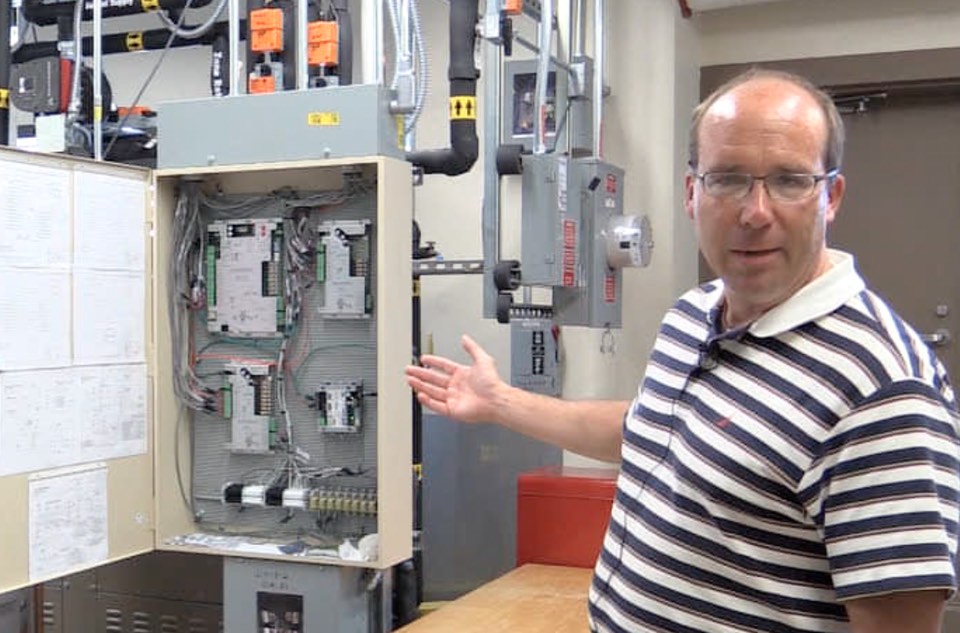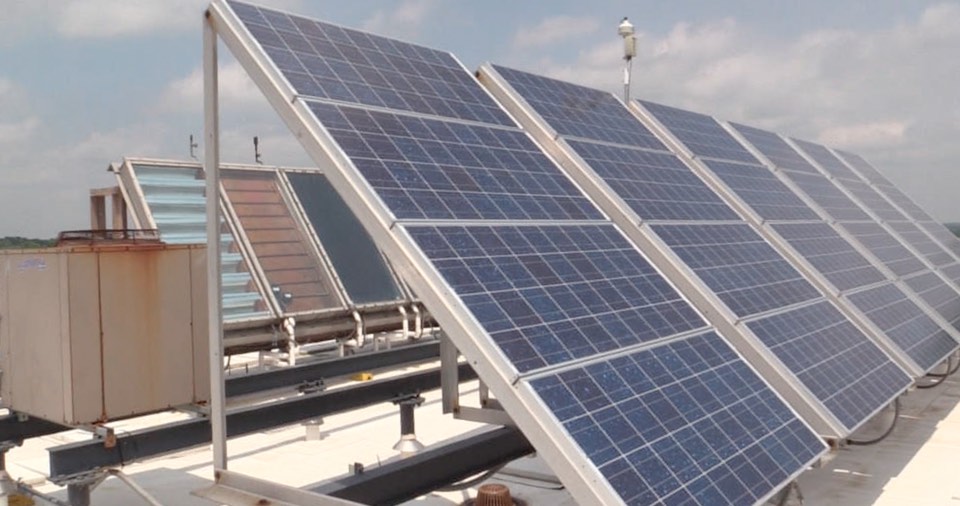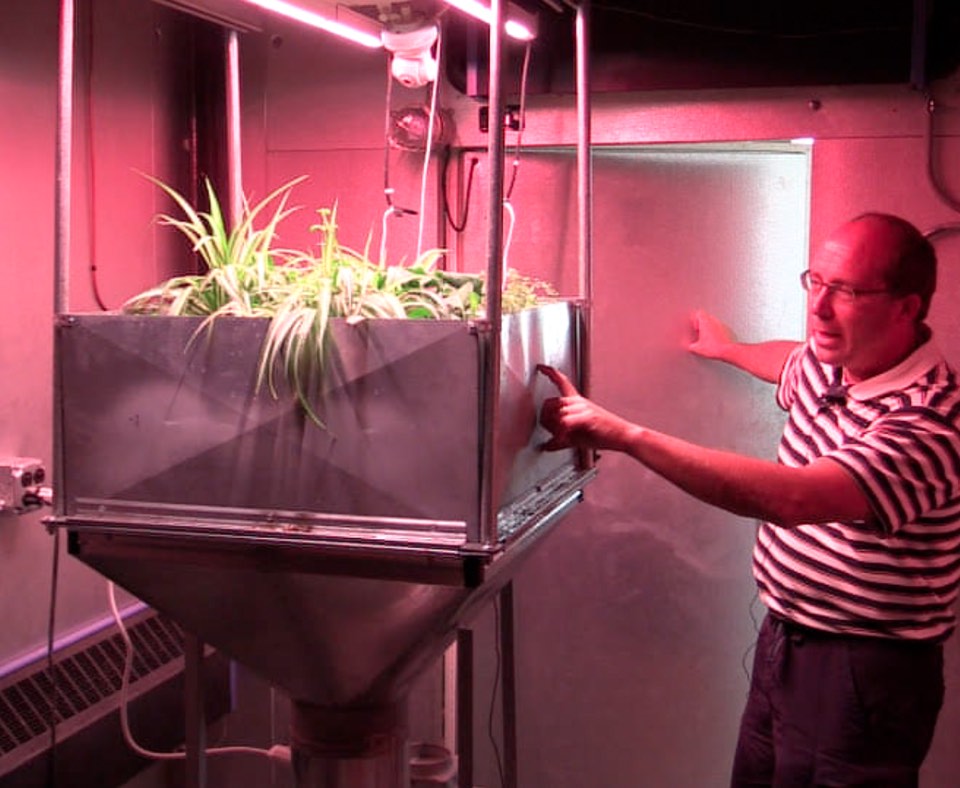Even when using renewable energy technologies, including some being researched in Purdue Polytechnic's Applied Energy Laboratory, achieving lower energy consumption goals in high performance buildings will be possible only when the people who use those buildings have high energy literacy, says Bill Hutzel, professor of mechanical engineering technology.
 “It’s great to come up with a design on paper for an innovative building with clever ways of saving energy,” but human factors remain critical, Hutzel said. “Unless the occupants and maintenance personnel understand what you’re trying to accomplish, you’re not going to get to net zero.” Commercial buildings designed for high efficiency will not meet their energy performance goals unless occupants use lighting, temperature controls, windows, and other energy-related systems in ways fully consistent with efficiency.
“It’s great to come up with a design on paper for an innovative building with clever ways of saving energy,” but human factors remain critical, Hutzel said. “Unless the occupants and maintenance personnel understand what you’re trying to accomplish, you’re not going to get to net zero.” Commercial buildings designed for high efficiency will not meet their energy performance goals unless occupants use lighting, temperature controls, windows, and other energy-related systems in ways fully consistent with efficiency.
“Energy literacy is a big human factor,” according to Hutzel. But the pursuit of net zero, which is the adding of as much renewable energy as needed so that a building can become self-sufficient, should begin the same way for both renovation projects and new construction. According to Hutzel, planners first need to make sure a building’s envelope and internal mechanical systems have been designed for the highest possible efficiency. This includes mitigation of temperature fluctuations caused by equipment inside which generates heat.
“A big part of design comes down to intelligent controls,” Hutzel said. “To a much greater extent than people realize, buildings are computer-controlled by sophisticated networks” with programming tailored to each facility’s purpose and occupancy.
Grid parity will make net zero more doable
Renewable energy is currently the most expensive part of the net zero goal. “Solar is going to provide a lot of energy during the day and wind at night. But we’re not trying to create buildings that are islands” since buildings will still be connected to the electric grid, Hutzel said, drawing power when needed and supplying surplus energy when available.
 Coal, despite its abundance, and other fossil fuels are becoming more costly to burn. At the same time, we’re seeing “aggressive decreases in prices” for solar and wind, Hutzel said. “In the not-too-distant future, we hope to have ‘grid parity,’ meaning that the cost of renewable energies will be about the same as fossil fuels.”
Coal, despite its abundance, and other fossil fuels are becoming more costly to burn. At the same time, we’re seeing “aggressive decreases in prices” for solar and wind, Hutzel said. “In the not-too-distant future, we hope to have ‘grid parity,’ meaning that the cost of renewable energies will be about the same as fossil fuels.”
Another challenge to the net zero goal is the intermittent nature of solar- and wind-based power generation. Hutzel is leading a team of students who are working on a Department of Energy-funded project to study the technical and financial feasibility of an on-campus utility-scale solar array. Working with the Purdue Energy Office, the students are investigating options for locating the array near an electric sub-station so that the power could be easily fed back into the electric grid. A goal of this five megawatt-sized array would be to offset the cost of the most expensive electricity Purdue buys from Duke Energy during times of peak electric use.
Retrofitting an existing building to improve efficiency requires an audit of energy usage, looking for inefficient lighting systems, obsolete computer-based control systems, underperforming boilers, air conditioners, and windows, and airtightness in the building’s envelope. “Look at all of them and determine which improvements will be most cost effective,” Hutzel said. “You can easily see energy use reductions of 30 percent or more, with a return on investment taking less than five years for many remediation measures.”
The government and independent professional groups hope that substantial numbers of large commercial buildings will have achieved net zero status by 2025 or 2030, Hutzel said, by retrofitting existing facilities, prioritizing high performance in new construction, and increasing energy literacy.
Auditing on-campus energy use
Compared to typical commercial locations, Purdue is unique in that the University generates much of its own power, and it has traditionally been plentiful and relatively inexpensive. But costs have risen enough to warrant routine energy audits of Purdue facilities, some of which are now done by students trained in Hutzel’s classes. They provide specific data for each potential remediation measure and its potential payback, he said.
Energy metering infrastructure is being installed “in every significant building on campus,” Hutzel said. An idea being considered is to provide deans with access to usage data so that they may actively engage faculty, staff, and students in conservation efforts.
Hutzel’s students work in the Applied Energy Lab, a focal point for energy initiatives in the college. Students learn about maintaining the solar panels on Knoy Hall’s rooftop and the strengths and weaknesses of each of several panel types, including both thermal and photovoltaic systems. Some of the panels generate a small portion of the building’s electric power, the first array of its type on campus to be tied into the electric grid. Having several different solar panel types in one location is "very good for teaching students," Hutzel said.
More recently, students coupled a solar thermal system with a heat pump system, creating a heat generation method “at least twice as efficient” as competing methods, Hutzel said. Although the system isn’t ready for scaling to other buildings, it’s a good example of student-driven innovation, Hutzel added. “Some students become so interested [in solar energy] that they pursue it as a career goal.”
The Biowall
 Another student-led energy efficiency initiative in the Applied Energy Lab is the “biowall,” a device in the lab’s environment chamber which uses plants to clean indoor air. “The biowall has a direct relationship to energy efficiency,” Hutzel said. “If you can maintain higher levels of indoor air quality such that occupants are healthy and comfortable, perhaps you can use less heating and air conditioning,” reducing energy consumption.
Another student-led energy efficiency initiative in the Applied Energy Lab is the “biowall,” a device in the lab’s environment chamber which uses plants to clean indoor air. “The biowall has a direct relationship to energy efficiency,” Hutzel said. “If you can maintain higher levels of indoor air quality such that occupants are healthy and comfortable, perhaps you can use less heating and air conditioning,” reducing energy consumption.
Hutzel also noted the interdisciplinary nature of the lab’s research projects. Students studying horticulture, biochemistry, interior design, and engineering have provided expertise to the biowall project.
As part of a collaboration with Eckhard Groll, professor of mechanical engineering, students are developing a next-generation biowall for installation in a West Lafayette residence. Whirlpool Corporation leased the house from the Purdue Research Foundation and is renovating it for energy efficiency research. “We hope to move the biowall technology out of the lab and into this residential home setting within the next few months,” Hutzel said.
Additional information:
- Applied Energy Laboratory
- Knoy Hall's Applied Energy Lab (video):
